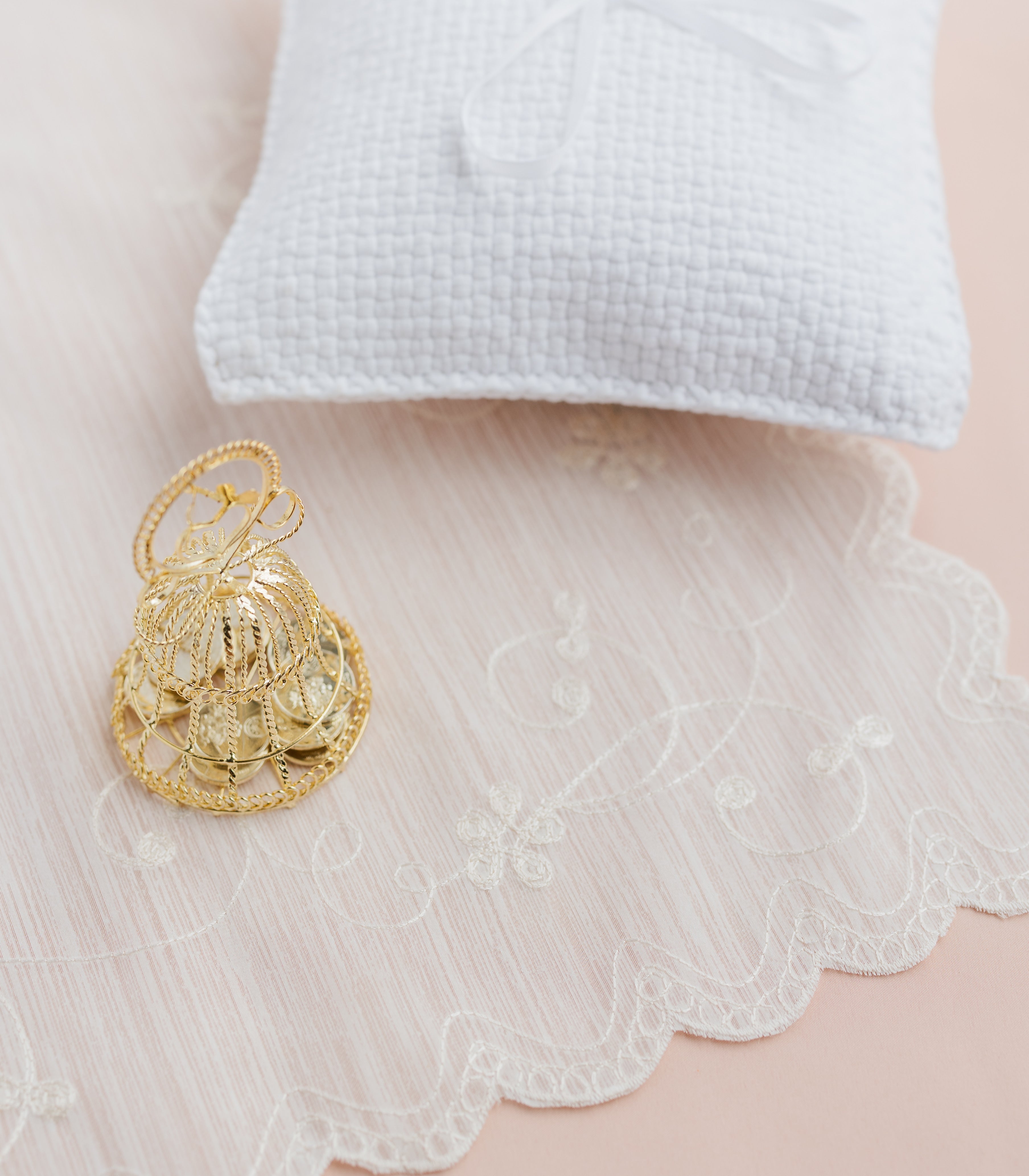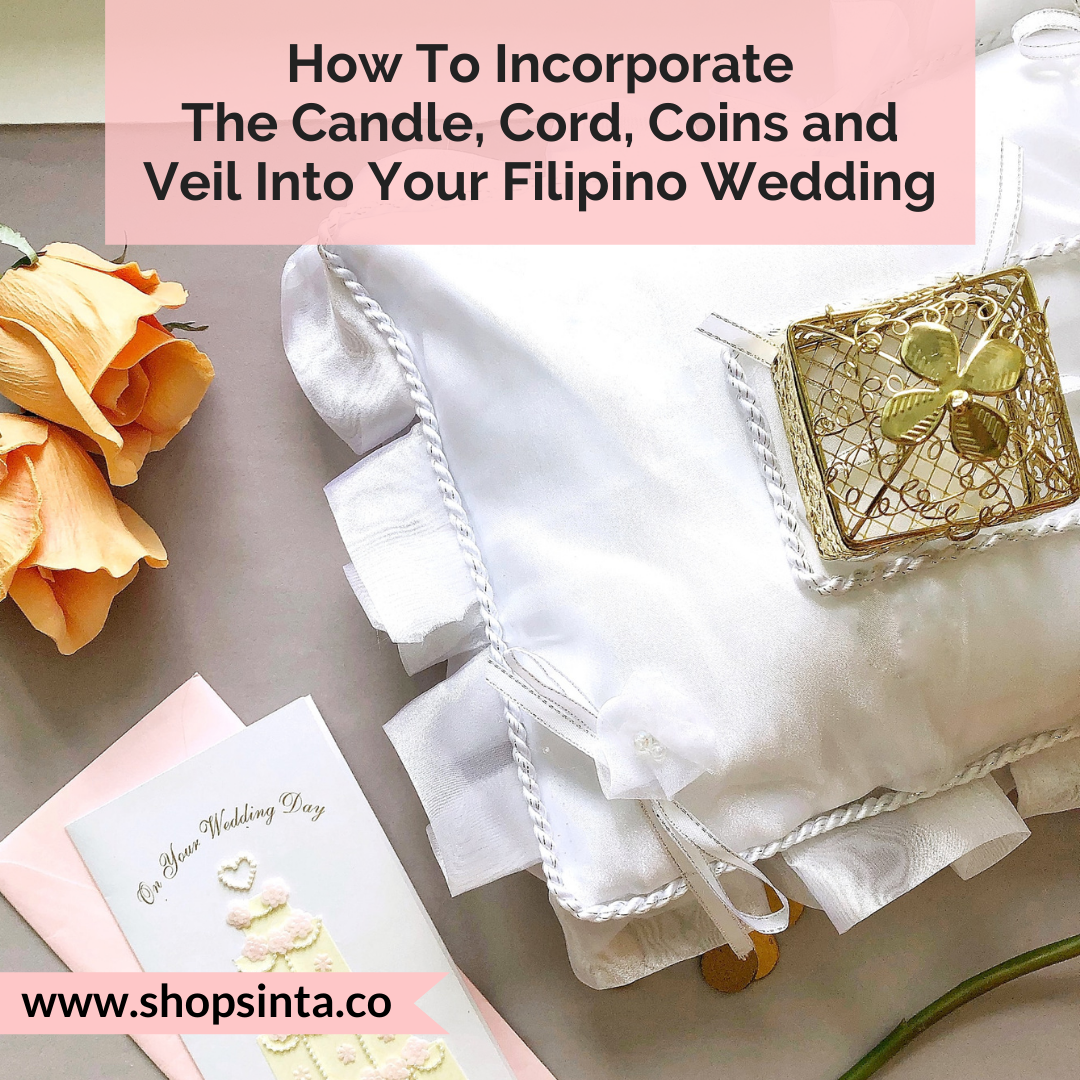When it comes to celebrating Filipino culture on your wedding day, there are few things more iconic than a traditional Filipino ceremony with the candle, cord, coins, and veil.
But with so little information available online, we tend to get a lot of questions like these:
“How do I incorporate the candle, cord, coins, and veil into my Filipino wedding?”
“How many sponsors do I need? And do they have to be Filipino?”
“What do we actually do or say?”
“What’s the flow of the ceremony?”
“Where do I find Filipino ceremony items for my wedding?”
To the last question, the answer’s easy. You can shop for the Filipino cord, veil and coins right here on Sinta & Co.! For the rest, there’s a bit more explaining to do.
 We incorporated the candle, cord, veil, and coins tradition into our own Filipino ceremony! You can do it, too. Photo credit Jessica Hoang
We incorporated the candle, cord, veil, and coins tradition into our own Filipino ceremony! You can do it, too. Photo credit Jessica Hoang
First, what ARE the Filipino candle, cord, veil and coins?
Widely speaking, Filipino weddings are a blend of religious and cultural influences: Christian (specifically, Catholic), Spanish, Chinese, and American. These introduced the Unity Coins, Candle, Cord and Veil Ceremony as an essential part of our traditional weddings!
Each ritual within the ceremony bears symbolism and significance.
During the candle ceremony, the ninong and ninang would light the couple's candles, who then light up a larger, middle candle as a sign of unity. Catholic in origin, it signifies Jesus Christ as the Light of The World, ever-present during the couple’s marriage. The three candles, on the other hand, are a reminder that this commitment takes 3 to be complete - the 2 partners and God.
The coin ceremony meanwhile represents the couple’s sharing of worldly goods, for richer or poorer. Here, sponsors would present the wedding officiator with 13 coins (also called Las Arras or Arrhae), which represent Jesus Christ and his 12 apostles, then trickling them into the hands of both partners.
 In a traditional FIlipino wedding ceremony, a Veil is placed over the couple to symbolize their unity as they face the world as one. See more veils on Sinta & Co.
In a traditional FIlipino wedding ceremony, a Veil is placed over the couple to symbolize their unity as they face the world as one. See more veils on Sinta & Co.
Then would come the veiling ceremony, which in itself signifies humility, that God will help them shoulder any burdens they might encounter during their marriage. Here, sponsors clothe the couple as one, placing the veil on the shoulders of the groom and on the bride’s head.
For the tying of the nuptial cord (also known as the Yugal), two sponsors would help bind the couple together, placing a silk lasso (or flower strands or a special rosary) over the couple’s heads. Ideally, these would be tied in a figure eight, which looks similar to the infinity sign.
While traditionally the candle, cord, coins and veil are a Catholic custom, couples have adapted it for non-religious ceremonies too. Regardless of your religious background, we encourage you to consider incorporating these into your big day.
That’s cool… but how do I actually include them in my Filipino wedding?
We put together the Ultimate Guide To A Filipino Wedding to help you!
Within this guide, you’ll find:
- Info on significance & symbolism of Filipino wedding rituals
- The flow of a traditional Filipino wedding ceremony
- Sample scripts for Catholic and non-denominational weddings
- Frequently asked questions, answered of course
Ready to access the guide? Sign up to our email newsletter below and you’ll get the guide straight to your inbox.
Gelaine Santiago

Gelaine is a social entrepreneur, an online storyteller, and a passionate advocate for diversity and ethics in business. She’s the co-founder of Cambio & Co., an e-commerce fashion company working with Filipino artisans to celebrate Filipino craftsmanship, culture, and heritage. Gelaine is also one of the founders of Sinta & Co., the world’s first conscious Filipino wedding boutique. She was named one of RBC’s Top 25 Canadian Immigrants of 2019. Find her on Instagram @gelainesantiago and www.gelainesantiago.com



Planning a non-denominational wedding and would love to incorporate my parents heritage in our wedding! Thanks for sharing the information!
yay
Thank you!!
Thank you for helping to keep our heritage alive and for the free guide!
Thank you for the free guide!
Leave a comment